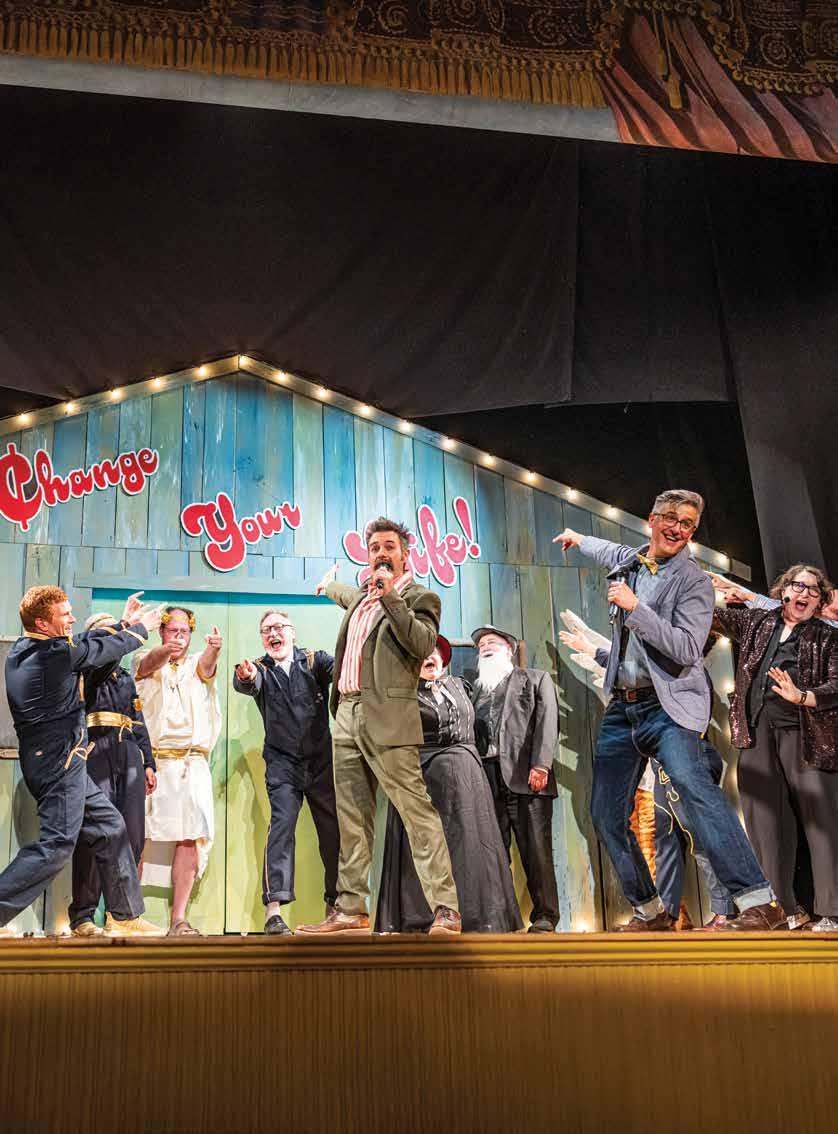

Building Lasting Community

“For the first time in our history, the Community Foundation granted over $50 million last year, with another $21 million in mission investing at work in the community. At a time of rising demand for services and uncertain funding, you—our donors and fundholders—are creating opportunities, building vibrant communities, and filling critical gaps for your neighbors.”
- Mark Foley, Jr., Board Chair
Board of Directors
Kathy Austin (Treasurer), Morgan
Laurie Beyranevand, Woodstock
Tim Briglin, Thetford
Kristin Carlson (Vice Chair), Montpelier
Elizabeth Catlin, Dummerston
Cindy Char, Montpelier
Nicole Curvin, Middlebury
Lindsay DesLauriers, Richmond
Mark Foley, Jr. (Chair), Rutland
Dimitri Garder (Secretary), Bennington
Alex Hernandex, Burlington
Richard Holschuh, Brattleboro
Alexandra MacLean, West Danville
Eric Miller, Burlington
Tammy Newmark, New Haven
John Vogel, Williston
For a complete list of the Community Foundation staff, please visit: vermontcf.org/staff.

Dear Friends,
There is a saying in Vermont that folks are generally good to each other because you never know when you’ll need a neighbor to pull you out of a snowbank. It gets a chuckle, but there’s truth to it. I’ve been pulled out a few times myself. In a community where people are connected to one another, decency eclipses disagreements.
There is so much potential behind that truth. We’ve seen it time and again over the past five years. Through two “hundred-year” floods, a pandemic, and social, political, and economic turbulence—conditions with a profound impact on Vermonters—you kept stepping up.
Thanks to your partnership, we are a vastly different organization than we were just a few years ago. In fact, nearly half of all grants made in the VCF’s four-decade history were made in the past five years.
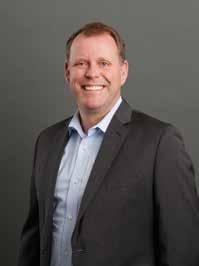
This year, we are seeing the impacts of disruptive federal policy and funding changes. Many organizations are facing deep instability. At the same time, we’re hearing from charitable Vermonters trying to understand this new landscape and asking how they can help. We don’t leave each other in the snowbank.
Internally, we are strengthening our infrastructure to meet today’s needs and to look long into the future. We are weaving together grantmaking, mission investing, and community engagement to drive community vitality. We have institutionalized disaster response through the David R. Coates Fund for Vermont Disaster Relief, a permanent source of immediate support in times of crisis. We merged our investment pools into a single mission-aligned investment strategy that sustains our field-leading commitment to mission investing in Vermont communities. And we invested in upgraded systems to better serve you—our donors, fundholders, and partners.
Whether it is internal innovation or external impact, progress is possible because you choose to engage with your community foundation. You put us in a position to not only respond to need, but also to look around the next corner, build partnerships, and lay a stronger foundation for Vermont communities.
From all of us at the Vermont Community Foundation, we are grateful for your continued trust and partnership.

Dan Smith, President & CEO
At Work in the Community
as of December 31, 2024
✔ Grants:
$52.1 Million
$79M
✔ Mission Investments: $21.0 Million
✔ Programmatic Activity: $5.9 Million
Grantmaking by Year
CHARITABLE FUNDS AND TOOLS DEFINED
Committee Advised Funds, sometimes known as People & Places Funds, empower community members to select grants supporting specific causes, topics, or regions.
Designated Funds provide ongoing support to one or more specific nonprofit organizations in perpetuity.
Grantmaking by Source
$52.1M TOTAL GRANTS
Fundholder Directed $26.9M grants recommended by Community Foundation fundholders (Donor Advised and Designated Funds)
Supporting Organizations
$3.6M including Let’s Grow Kids, the McClure Foundation, and The Curtis Fund
Community Foundation Directed $7.6M grants from the Foundation’s Discretionary Funds
People & Places Funds .....................
$2.2M informed by community members from around the state, such as the Vermont Women’s Fund, the Samara Fund, and others
Nonprofit Funds $11.8M Reserve and endowment funds established by nonprofit organizations
Discretionary Funds (Field of Interest & Unrestricted) allow donors to select a cause, region, or topic and have Foundation staff select grantees that match that goal.
Donor Advised Funds provide the donor with an immediate tax deduction and enable grantmaking by individuals, families, foundations, and businesses to one or more organizations, at any time of year.


Grantmaking by County
$52.1M TOTAL GRANTS
993
TOTAL GRANTS STATEWIDE
Examples:
• Governor’s Institutes of Vermont
• NOFA-VT
• Vermont Professionals of Color Network
• Preservation Trust
954
TOTAL GRANTS OUT OF STATE
Examples:
• National Park Foundation
• Doctors Without Borders
• Oxfam America
• Pacific Whale Foundation
Mission Investments are designed to generate both financial and social returns. They align with the Foundation’s mission, values, and focus areas, and are directed toward strengthening Vermont communities.
423
TOTAL GRANTS IN MULTIPLE COUNTIES
Examples:
• Tri-Valley Transit
• AIDS Project of Southern Vermont
• Green Mountain United Way
4,296
TOTAL GRANTS AWARDED
Geographic Distribution of Grants
484 GRANTS
68 GRANTS
179 GRANTS
167 GRANTS
Nonprofit Funds (Endowment & Reserve) are established to take advantage of the Foundation’s investment management services to generate income to support the nonprofit for a period of time or in perpetuity.
Supporting Organizations offer the benefit of a private charitable foundation without the administrative burden. They have their own board of directors and autonomy in grant and investment decisions.
Testamentary Funds are established through a provision in an individual’s estate plan, which includes trusts, IRAs, and other vehicles that outline the distribution of assets for charitable purposes upon the donor’s passing.


Community Impact
Closing the Opportunity Gap
$52.1M
TOTAL GRANTS
63.9%
Grantmaking by Impact Area Health &
Democracy, Trust, & Community Leadership
3.2%
The problems we are trying to solve are dynamic and deeply interconnected—and so is our approach.
Since 1986, the Community Foundation has served as a permanent source of support for Vermont.
A lot has changed since then. Today’s challenges don’t exist in isolation. Housing affordability shapes economic opportunity. Civic engagement depends on access to local journalism. Flood mitigation is tied to the health of our forests. These issues overlap and compound in ways that demand holistic, long-term thinking.
When we talk about closing the opportunity gap, we are talking about how these issues collectively prevent individuals from building a bright, secure future, no matter their background or zip code. That means looking beyond one-size-fits-all solutions and investing in what works for each community based on its own assets, values, and needs.
Our mission has never wavered, but our strategies continue to evolve.
Your team at the Community Foundation looks broadly at the biggest challenges facing
Vermonters—workforce shortages, affordable homes, climate-related disasters, and the rising costs of healthcare and education—and we ask:
How can philanthropy be part of the solution? That answer takes many forms. We make grants through both the Community Foundation’s initiatives and our generous fundholders. We deploy mission investments that align capital with community priorities and economic growth. We engage directly with communities to listen and learn. And we connect partners—nonprofits, state and federal agencies, local businesses, and more— to tackle challenges together. Each of these tools is powerful on its own, but together they strengthen the roots of long-term community vitality.
The stories from Hardwick highlighted on the next page show what this looks like in action. They remind us that when philanthropy is flexible, collaborative, and grounded in local wisdom, communities don’t just move forward—they thrive.
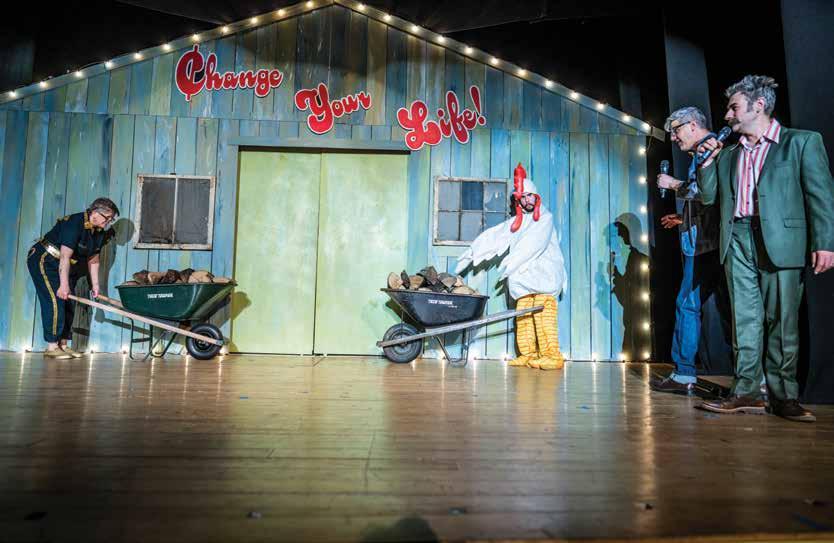
Cultivating Vibrancy in Hardwick
There’s no single path to closing the opportunity gap. These examples show how grants, investments, and local partnerships are making a difference in Hardwick.
With grants from the VT Flood Response & Recovery Fund and support from VCF staff, Long-Term Recovery Groups like kuRRve have helped over 1,000 residents and repaired more than 130 homes across the Northeast Kingdom. Their work helped to ensure that people like George in Hardwick stayed safely housed after backto-back floods.
READ THE STORY ON PAGE 22
Backed by over $1 million in mission investments, alongside grants from VCF donor advised fundholders, the Yellow Barn Project is helping move $12.5 million of local food from farms to tables, supporting over 150 jobs, and strengthening Hardwick’s role as a regional food systems hub. READ THE STORY ON PAGE 30
With support from VCF’s Arts & Social Cohesion grant program, the Civic Standard revived Change Your Life, a homespun, audience-driven game show that brought Hardwick locals onstage and a beloved tradition back to life for one unforgettable night (pictured above and on the cover).
THE HIGHLIGHT ON PAGE 9
“One day you are mucking your neighbor’s basement after a flood, another day you are standing beside them in an original theater production—here at the Civic Standard, we believe both are vital parts of building lasting community in rural Vermont, and both are possible because of VCF’s grant programs and ongoing support.”
- Rose Friedman, Civic Standard Founder & Executive Director
Photo Credit: Terry Allen
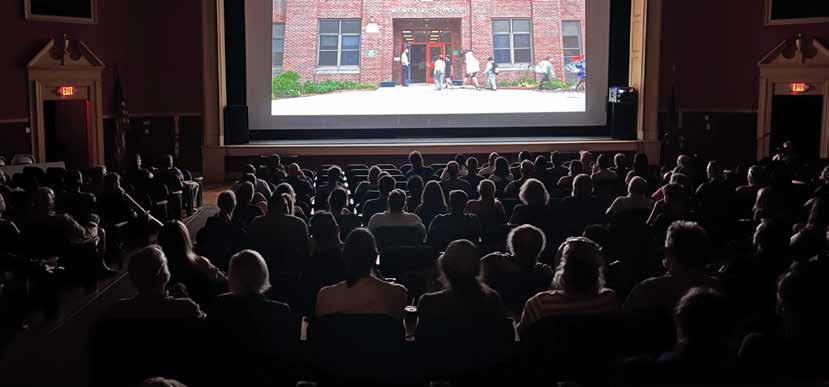
Funds, Foundations, & Initiatives
The Community Foundation is home to more than 1,000 funds, foundations, and initiatives. These are some highlights.
The Philanthropic Leadership Fund
Leadership that Moves Vermont Forward
The Vermont Community Foundation is proudly putting nearly $80 million to work in Vermont communities annually. But “dollars in, dollars out” only tells part of the story. We are also investing in the systems, people, and knowledge that help those dollars go further—building cross-sector relationships and asking the hard questions about what Vermont really needs now and in the years to come.
It’s a role we take seriously, because Vermonters— donors, fundholders, nonprofits, and partners—trust us to help move the state forward. That trust is both a privilege and a responsibility.
Thanks to your support, the Philanthropic Leadership Fund powers the behind-the-scenes work that allows the Community Foundation to show up with clarity, coordination, and compassion in complex and evolving situations. It fuels our ongoing investment in the systems, people, and knowledge that make lasting change possible. It ensures that VCF is able to lead not only in times of disruption but in shaping a resilient, equitable, and vibrant future for rural Vermont.
We’re grateful for what the Philanthropic Leadership Fund has made possible, and for the generosity and trust of the donors and fundholders who have made a gift to support this work. It strengthens Vermont’s philanthropic infrastructure, supports tested local
solutions, and sustains leadership prepared to meet complex challenges with expertise. Together, we’re fostering resilience, creativity, and long-term potential across the state.
This is your Vermont. Let’s shape its future together.
In recent years, the Philanthropic Leadership Fund has enabled the Community Foundation to:
• Activate the VT Flood Response & Recovery Fund within 24 hours of the 2023 floods, ultimately mobilizing nearly $16 million over two years to help farms, small businesses, and displaced families recover
• Spark dialogue about the quiet crisis facing boys and young men in partnership with the Tarrant Foundation and others, by bringing in thought leader Richard Reeves and producing Gone Guys, a film exploring the urgent need to better understand and engage this critical population in Vermont and beyond
• Establish Press Forward Vermont as part of a nationwide nonpartisan initiative to sustain trusted local journalism and strengthen access to local news and information across the state
• Expand the Insight Hub, a growing library of webinars, events, and learning resources that help fundholders and donors make more informed, effective decisions about the issues they care about most
A screening of Gone Guys in Bellows Falls
Supporting Organizations

Addison Community Athletics Foundation
For the Addison Community Athletics Foundation (ACAF), promoting wellness through tennis means removing barriers to play. By prioritizing accessibility through free and low-cost programs, affordable memberships, and scholarship assistance, ACAF opens doors to a sport that fosters physical health, mental wellbeing, and community connection. This leadership earned ACAF USTA New England’s 2024 Organization of the Year award, celebrating the power of sport to strengthen communities. vermontcf.org/ACAF

The Curtis Fund
The Curtis Fund provides scholarships for Vermonters pursuing college or career training, helping to open doors to economic, emotional, and social wellbeing. Last year alone, 881 scholarships were awarded, and degree program recipients graduated at an impressive rate of nearly 90%, compared to Vermont’s overall rate of 66%. These scholarships change lives by making education and opportunity more accessible. Meet Kirsty, a Curtis Fund Scholar who once believed college was out of reach, but through Curtis Fund support went on to graduate from Vermont State University–Johnson, build a career in disaster relief, and ultimately return to her college town to help the community recover from the 2023 flood. vermontcf.org/curtis-scholar-kirsty

J. Warren and Lois McClure Foundation
Thanks to the vision and generosity of Lois McClure, the McClure Foundation’s Free Degree Promise is transforming lives across Vermont. By removing financial barriers to higher education, the program is helping students like Blake, Chelsea, and Donovan graduate faster, with less debt, and with greater confidence in their futures. Lois’s legacy lives on in this bold commitment to opportunity, community, and a brighter future for Vermont’s young people. Read more on page 12 and at mcclurevt.org.

Let’s Grow Kids
Fueled by Rick Davis’s vision and an unwavering commitment to Vermont’s children, Let’s Grow Kids transformed early childhood education across the state. What began as a small philanthropic initiative grew into a powerful movement—mobilizing tens of thousands and securing $125 million in annual public funding for childcare. As the organization sunsets, its legacy endures: a stronger system, a statewide commitment, and a future where every child has the chance to thrive. Read more on page 14 and at letsgrowkids.org.
People & Places Funds
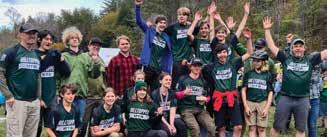
Northeast Kingdom Fund
For the Kingdom, by the Kingdom. The NEK Fund supports the people and communities of Caledonia, Essex, and Orleans counties through grants decided by a committee of local youth and adults. Of the $102,842 granted in 2024, $55,932 went specifically to programs for NEK youth. One project funded through this effort is HilltopperMTB, an inclusive, coed mountain bike club run by the St. Johnsbury Recreation Department, offering racing opportunities and expanding access to mountain biking for NEK youth. vermontcf.org/NEK

Samara Fund
Rooted in joy and collective care, the Samara Fund uplifts the voices and wellbeing of LGBTQ+ Vermonters. Led by Queer and Trans Vermonters, the fund awards grants and scholarships to programs that center empowerment, health, and safety for LGBTQ+ people across the state. From youth mentorship projects to initiatives supporting BIPOC and Trans Vermonters, the Samara Fund channels resources where they’re needed most—advancing equity and belonging for all. In the past year, grants have supported projects like inclusive roller derby clinics for queer youth, anti-bullying advocacy in schools, and community Pride events designed to foster connection and resilience. vermontcf.org/Samara

Vermont Women’s Fund
The Vermont Women’s Fund celebrated 30 years of impact and over $5 million in grants supporting women and girls. 2024’s sold-out Annual Celebration welcomed new director Emily Bush and featured inspiring moments from Myra Flynn and Stacey Abrams. Over $1.7M was raised in 2024, including a generous bequest from Lili Ruane—support that fuels statewide leadership, initiatives, and grantmaking advancing the lives of women and girls across the state. Learn more: vermontwomensfund.org
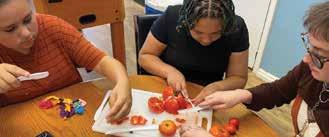
Opportunity Fund for Southshire Youth
The Opportunity Fund for Southshire Youth (OFSY) supports programs that connect teens and create opportunities in Bennington, North Bennington, Pownal, Shaftsbury, and Woodford. In 2024, OFSY convened area youth to help shape funding priorities. Grantees included the Center for Restorative Justice’s Lounge, an afterschool drop-in space for at-risk, justice-involved, marginalized, and underserved youth, and the Take Care Project, which hosted a free hair clinic for BIPOC youth in Bennington to celebrate cultural roots, offer hair care education, and build community. Of the $33,000 in 2024 grants, $15,000 went to the youth-directed priorities to create, maintain, or expand spaces that allow youth to gather and encourage belonging and inclusion. vermontcf.org/OFSY
Funds, Foundations, & Initiatives
Community Impact Initiatives

Health Equity
The Health Equity program, a collaboration between the VCF and the Vermont Department of Health, demonstrated the power of collaboration between public and private entities. Through this initiative, over $8 million in federal funds were awarded to 34 communitybased organizations working to advance health equity across Vermont. Rooted in a commitment to community leadership, the program intentionally engaged people with lived experience in grant decision-making and simplified the application process to ensure funding was accessible to those best positioned to address local needs. Together, these efforts closed gaps, lifted voices, and built healthier, more inclusive communities across Vermont. vermontcf.org/health-equity-report

Press Forward
Press Forward strengthens democracy by supporting reliable, accessible, and community-centered local news. Funded through VCF fundholders and donors and grants from the Knight and MacArthur Foundations, Press Forward Vermont is a multi-year initiative to invest in Vermont’s journalism landscape, foster collaboration, and ensure that every community has access to trusted information. This past year, the initiative took major steps forward, investing in the development of a new Vermont Journalism Coalition in partnership with the UVM Center for Community News and exploring shared news services through VTDigger. Together, these efforts are helping local media thrive and better serve Vermonters. vermontcf.org/press-forward

Village Trust
This year, the Village Trust Initiative marked an exciting new chapter in Vermont’s commitment to thriving, resilient communities. Through a partnership between the Vermont Community Foundation, Preservation Trust of Vermont, and Vermont Council on Rural Development, the initiative will support 20 historic villages to launch transformational revitalization projects—from reimagined general stores to new community centers and housing solutions. Alongside federal investment, the VCF provides upfront philanthropic grants and technical support to help communities form local nonprofit trusts, begin project planning, and seed permanent community funds. These early investments offer critical flexibility and momentum, empowering communities to chart their own futures while preserving the places that make Vermont special. ptvermont.org/village-trust-initiative

Arts & Social Cohesion
In the 2024 Vermonter Poll, 93% of respondents agreed that opportunities to view and participate in arts and culture are important to thriving and healthy communities. Funded by a generous grant from a VCF donor advised fund, Arts & Social Cohesion supported projects strengthening connection and belonging across Vermont. Highlights include Unheard Stories, a Winooski afterschool program for refugee youth celebrating cultural identity; Acorn Youth Arts, a collaborative theater project by youth from Orange and Washington counties about growing up in rural Vermont; a 120-foot community mural centering Abenaki perspectives at Brattleboro’s Retreat Farm; and in Hardwick, the Civic Standard’s revival of a homespun, live game show played by locals— each fostering creativity, leadership, and social connection. vermontcf.org/arts-social-cohesion/
Your trust, partnership, and generosity make every story in this report possible—and inspire us every day.
Among the stories in this report, you’ll read about:
• A visionary philanthropist who believed deeply that education unlocks opportunity
• A mentor for low-income students who could not accept that some children are disadvantaged from the start based on circumstances beyond their control
• A couple who choose to live simply so they can help others thrive
• A retiree whose love for Vermont inspired a legacy gift to his community that will benefit generations to come
What ties these stories together is a deep care for Vermont and the wellbeing of others, and a belief in the power of philanthropy. That is what you, our fundholders, bring to the table every day. From flood recovery to investing in innovative technologies, you are the “community” in the Vermont Community Foundation. Thank you.
Our Fundholders are making a difference through grants and mission investments.
370 Donor Advised Funds (DAFs)
3,185 DAF Grants Made $23.9M DAF Grants
Average DAF grants over the prior 5 years: $17.2M
1,041
Total VCF Funds
85.8%
Percentage of VCF fundholders based in Vermont 14.2% based out of state
$60.5M
Total Gifts Received
Grantmaking by Focus Area
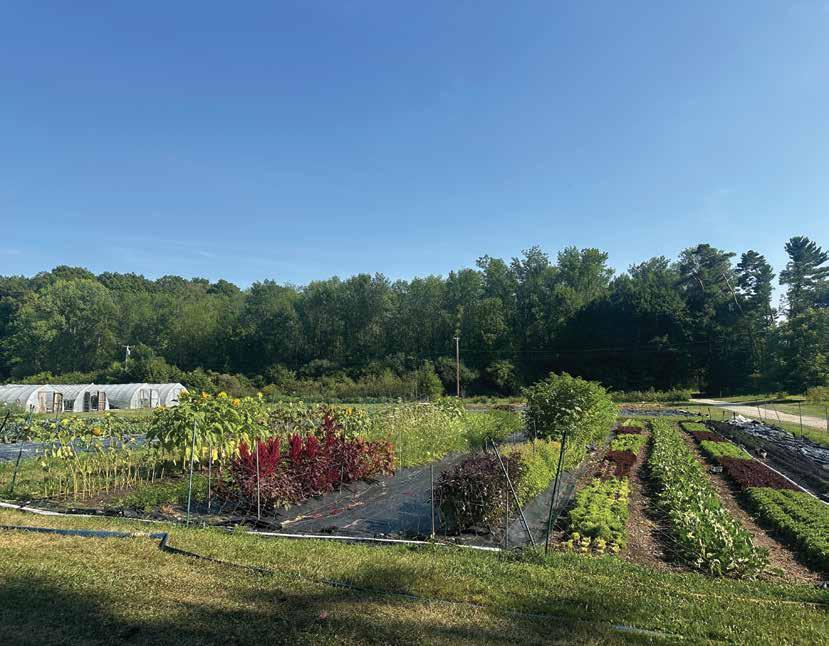
$52.1M
Total 2024 Grantmaking from all VCF Funds
TOTAL GRANTS: 4,296
TOTAL GRANTEES: 1,879



The Free Degree Promise
A bold commitment to Vermont youth has accelerated pathways to possibility
Blake Clark never imagined he would be fully employed with a college degree by age 20. Chelsea Tatro couldn’t see a path for herself beyond high school and thought higher education was only for the “highest achieving people.” Donovan Arnold had outgrown the math classes in his rural high school by his junior year. He was interested in college but didn’t want to be saddled with debt.
Vermont’s Free Degree Promise proved a game-changer for all of them. Funded by the J. Warren & Lois McClure
Foundation, the Free Degree Promise offers all students in the Vermont high school classes of 2023-2026 the opportunity for an accelerated pathway to a free associate degree through the state’s Early College program at the Community College of Vermont (CCV).
Today, two years out of high school, Blake has his associate’s degree in business and a fiveyear plan to launch his own HVAC business.
Chelsea, whose degree from CCV now hangs in her dorm
room at the University of Vermont, will earn her B.S. in Secondary Education. “Having a degree is life-changing,” she said. “Not only do employers look for it, I feel so confident and accomplished.” She plans to become a history teacher after graduation.
“With an associate degree, I could get a great accounting job at the age of 19,” Donovan said when he started the program. “But even if I go on to a bachelor’s or master’s degree, I’ll still be in my early twenties when I graduate. That feels like a really big win for
From left to right: Blake, Donovan, Chelsea, photos courtesy of CCV
me.” He graduated this spring from CCV with a bookkeeping certificate and a degree in accounting.
Three years into the five-year Free Degree commitment, students are graduating at twice the rate and in half the time as community college students nationally. CCV has seen a 150% increase in the number of lowincome students attending Early College, and about half of this year’s 70+ graduates are firstgeneration college students.
“When you remove the financial barrier, students view their future with clarity, hope, and excitement,”
said Sarah Kresser, the
Early College
Degree
Program
Manager
at CCV. “They can focus on setting goals and planning a pathway to a degree. This gives them more agency and motivation.”
“I’m really excited for what my
future has in store.”
- Blake Clark
Celebrating Lois McClure
When Lois McClure passed away in January 2025 at age 98, Vermont lost one of its most caring and visionary philanthropists. Lois will be remembered by many for her belief that all people should have the opportunity to pursue their goals. Those who knew her will also remember her love of Vermont, her deep curiosity, her unwavering sense of responsibility to serve her community, and the profound impact of one woman’s commitment to an enduring question:
How do we make Vermont a better place for all?
Lois and Mac McClure’s forward-thinking approach to philanthropy was decidedly place-based. Their intent was that their wealth, generated through the sale of the Burlington Free Press, benefit Vermont communities. And they believed that community service, especially, is how friendships are made and relationships are strengthened.
“In every age, in every generation, crisis or no, someone has to care. Our job is to multiply our talents, to make sure we are broadening the base of those who do care.”
-
They were early champions of the VCF among many other Vermont organizations, giving tens of millions to and through the Community Foundation, including through the J. Warren & Lois McClure Foundation which they established thirty years ago to formalize the family’s philanthropy.
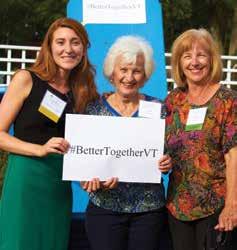
Under the leadership of their daughter Barbara Benedict, the ongoing efforts of the McClure Foundation will continue to be guided by Lois’s love for Vermont and her belief that education improves the conditions for people to bloom where they’re planted.
Lois McClure
McClure Executive Director Carolyn Weir, Lois McClure, and Barbara Benedict
The Power of Purpose
How Let’s Grow Kids transformed early childhood education in Vermont
The story of Let’s Grow Kids begins with Rick Davis. A mentor to low-income students in Burlington and board chair of the King Street Center in the 1990s, he saw firsthand that some children had “three strikes against them” simply due to the circumstances in which they were born.
“It wasn’t fair,” said Rick, “and it was costing the state a lot of money. A child’s brain is developing so quickly in those early years. In a good, healthy environment, all those little neurons are connecting. When that doesn’t happen, there are going to be learning and social-emotional problems down the road.”
Sustaining Momentum for the Youngest Vermonters
With Let’s Grow Kids sunsetting, Vermont enters a pivotal moment in the effort to strengthen early childhood education. The Vermont Community Foundation is committed to sustaining forward momentum.
In partnership with Let’s Grow Kids and other funders, the VCF is awarding grants to key partners advancing systemic change— among them First Children’s Finance, the Vermont Association for the Education of Young Children, and Building Bright Futures.
Rick decided to make a philanthropic investment in the future of those children. He reached out to a friend, Carl Ferenbach, and pitched the idea of a foundation for kids in Vermont.
The Permanent Fund for Vermont Children
In 1999, Carl and Rick opened the Permanent Fund for Vermont Children, the precursor to Let’s Grow Kids, as a supporting organization of the Vermont Community Foundation.

The Early Childhood Fund at the Community Foundation— supported with funds from Let’s Grow Kids and others— will continue investing in efforts that directly support childcare providers across Vermont. These grants help increase access for families by strengthening the infrastructure of care. They support feasibility studies to expand capacity, training opportunities for the workforce, and urgent, unexpected needs such as replacing a broken
refrigerator. The goal is to meet immediate, on-the-ground needs while continuing to build a stronger, more accessible system. Beyond grantmaking, the Community Foundation is also bringing people together.
The VCF is helping donors and statewide leaders stay connected through shared learning, aligned strategies, and conversations that shape the future of early care and education in Vermont.
Rick Davis, pictured here with his grandchild, has championed early childhood education in Vermont
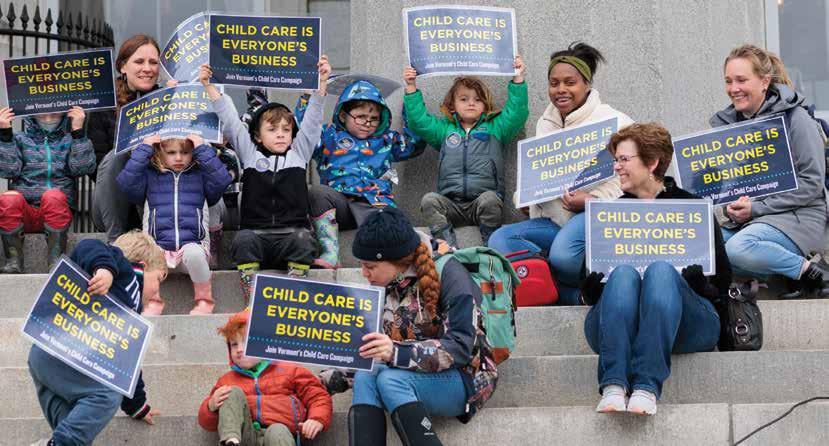
That first year, their grantmaking budget was $250,000. Through relationships, collaboration, perseverance, and a laser focus on children aged 0 to 5, that quickly grew to $8 million.
A philanthropic spark to public support
Rick and his growing team traveled the state, asking experts in early childhood education what was needed most. They listened, learned, and made grants. Among them, pilot programs that established public-private partnerships between schools and childcare providers for early education, which eventually led to the adoption of Act 166 and Universal Pre-K in Vermont in 2014. That same year, they hired an exceptional CEO, Aly Richards, renamed their fund Let’s Grow Kids, and launched an advocacy campaign to effect systems-level change in early childhood education.
In 2023, Let’s Grow Kids secured their crowning achievement—a $125 million annual investment in affordable, accessible childcare from the State of Vermont.
Since then, over 1,000 new childcare spaces have been created, along with 230 new early childhood
“Vermont is a laboratory where you can get things done and become a model for the nation.”
- Rick Davis
education jobs in Vermont. 3,000 additional families have received access to tuition assistance to make childcare more affordable.
“The goal wasn’t to try and solve the problem through philanthropy alone,” said Rick. “The goal was to get the very best people engaged and build sustained support for children ages birth to five in Vermont. That was our mission.” More than 40,000 Vermonters were engaged in the advocacy work of Let’s Grow Kids.
This year, Let’s Grow Kids will sunset as an organization, however the Let’s Grow Kids Action Network will continue as an advocacy organization. Although Rick will step down from the board, the movement he ignited now has a life of its own.
“The work will keep going,” he said. “The DNA of Let’s Grow Kids will continue.”
Photo Courtesy of Let’s Grow Kids
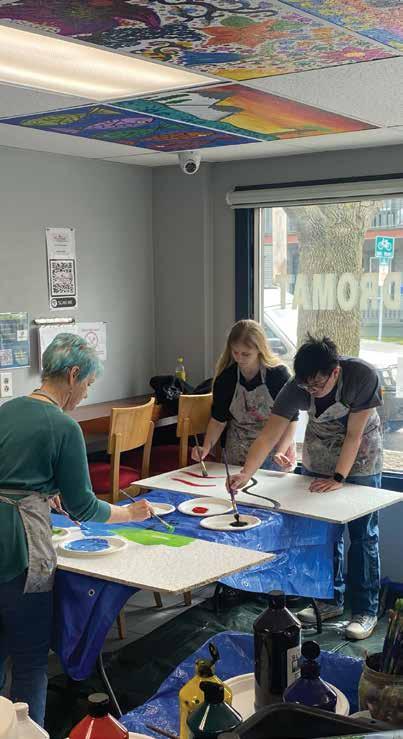
“Negativity thrives in a vacuum... building a space where people are doing positive things for the community will fill that void.”
- Andrew Christiansen, VT Community Wash and Learn Co-Founder
More than a Laundry: A Clean Start
Access to clean clothes, job training, and connection is helping people build a path out of poverty
Radha Selvester, the work readiness coordinator at Vermont Community Wash & Learn, met “D” during free laundry hours at King Street Laundry. She encouraged D, who was unhoused at the time, to join the nonprofit’s workforce development program, a six-week, paid program that helps individuals build soft and professional skills through the laundry’s wash, dry, fold service.
“She had faced so many barriers to employment,” said Radha, “but she persevered, worked with her readiness coach, and was recently hired on the spot at a local job fair. We are all so proud of D. Her path ahead looks bright!”
Just under two years after they purchased King Street Laundry in 2022 with support in part from the Vermont Women’s Fund, Andrew and Hannah Christiansen established Vermont Community Wash & Learn in 2024. They saw an opportunity for the laundromat to serve a broader purpose in the neighborhood through workforce training, financial literacy, and the arts. “Negativity thrives in a vacuum,” said Andrew. “So we’re operating under the thesis that building a space where people are doing positive things for the community will fill that void.”
Among them, free laundry services every Wednesday between one and three in the afternoon. To date, they have provided 288 free
laundry loads to 101 unhoused individuals, financed by contributions from people like the Venners.
The workforce development program offers a zerobarrier training environment for individuals like D to gain both skills and confidence, while a recent series of financial literacy workshops for New Americans offered guidance on budgeting, credit building, and personal finance. In partnership with the Champlain Valley Office of Economic Opportunity community ambassadors, the 10 workshops were offered in seven different languages.
To build community and a sense of ownership, King Street Laundry hosts free painting and sewing events, recently pulling down ceiling tiles for local residents to decorate the space with brightly colored designs. Everyone who participated also got to do a free load of laundry. “If you’re here for an hour doing laundry, you might as well join in,” said Andrew.

Bruce and Lillian Venner Are Helping Vermonters Build Better Lives
Over 36 years volunteering with Green Mountain Habitat for Humanity, Bruce Venner helped build over 90 homes in Vermont.
To mark his 85th birthday, his wife, Lillian, established a housing-focused discretionary
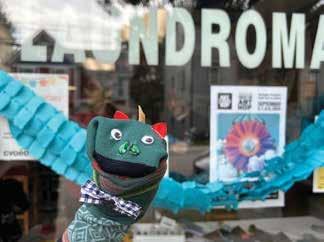

fund with the Community Foundation. “It was the most fitting gift for him,” she said.
“An increasing number of people are wondering how they’ll pay their bills when they come due,” said Lillian. “We feel really blessed not to be in that position. We live simply. We’ve been able to educate our children and our grandchildren, and now we’d like to spend our money where it’s needed.”
In addition to the housingfocused discretionary fund
Lillian gifted Bruce, the Venners also give generously through a VCF donor advised fund. From
supporting free laundry services for people without homes at Vermont Community Wash and Learn to ensuring vibrancy in the arts with grants to the Flynn, the Venners take a broad approach to their giving.
“It’s a huge weight off my shoulders to write one check to the Community Foundation and have them distribute grants based on our priorities,” said Lillian. “The world is much more complex now, and they have a broader sense of need in Vermont than I ever will.”
Bruce and Lillian Venner give to more than 75 organizations, most of them local to Vermont.
Bruce smiles as he receives a certificate for the discretionary fund birthday gift from Lillian.
Feeding a Community
Sustained support allows the Community Food Cupboard to “look ahead, not just keep up”
Prior to the pandemic, the Community Food Cupboard in Manchester served 350-400 households experiencing food insecurity a year. Now they serve that same number in a month.
“Everything changed,” said program manager Martha Carey. “We all go to the supermarket; wages have not changed at the same rate as groceries. It’s hitting a lot of people. And housing is really expensive. A lot of people are stretched just to pay their rent, and food is the thing they cut back on.”

The increase in need, combined with economic uncertainty, makes recurring gifts given in perpetuity, like the one from Leonard Ahlfeld, all the more important for organizational stability.
“Knowing that we have donors that support our work and trust us to use their donation to support the community lets us face these changes with confidence and the ability to look ahead, instead of just keeping up.”
To advance its mission of a hunger-free community, the Food Cupboard has doubled down on outreach to seniors, New Americans, and other groups who may be experiencing food insecurity but don’t know how to access support. They’re also engaging more volunteers, partnering with local schools to rescue food that would otherwise be wasted, and purchasing more produce locally from area farms to support the region’s economy.
“Food insecurity is not something people need to feel ashamed about. We can share vegetables and recipes, and it can be positive and forwardthinking,” said Martha. “Having a stable base and financial security allows us to think that way.”
At a recent fundraising event in town, a half dozen individuals who were former patrons of the Food Cupboard stopped in to say hello and make a donation. “For me, that’s the best story,” said Martha. “It’s not forever for most people. It’s to get them through a tough time. People really appreciate that.”


A Lasting Gift for the Place He Loved
After more than 50 years of visiting Vermont, Leonard Ahlfeld moved to Manchester in his later years to be closer to family. Spending time with his sons among the forested landscape, Leonard felt he truly became a Vermonter, and wanted to give back to the community where he felt at home.
Prior to his passing, Leonard established a designated fund at the Community Foundation, allowing him to direct the required minimum distribution (RMD) from his retirement account to charitable purposes. He was an avid listener of Vermont Public and wanted to support the station, as well as low- and moderate-income people living in the Manchester community. With guidance from his philanthropic advisor at VCF, Leonard designated his grantmaking to Vermont Public, the Manchester Community Library, and the Community Food Cupboard—organizations where he felt his contributions would have the greatest impact.
By also leaving the balance of his retirement account upon his passing to his charitable fund, Leonard both eased the tax burden on his estate and ensured annual contributions to the causes he valued most, in perpetuity.
“We were fortunate that Dad didn’t need his retirement distribution for daily living expenses. He wanted to give back to the community he loved, and the Vermont Community Foundation allowed him to do that in a lasting and meaningful way.”
- David Ahlfeld
Leonard Ahlfeld with his dog, Willy
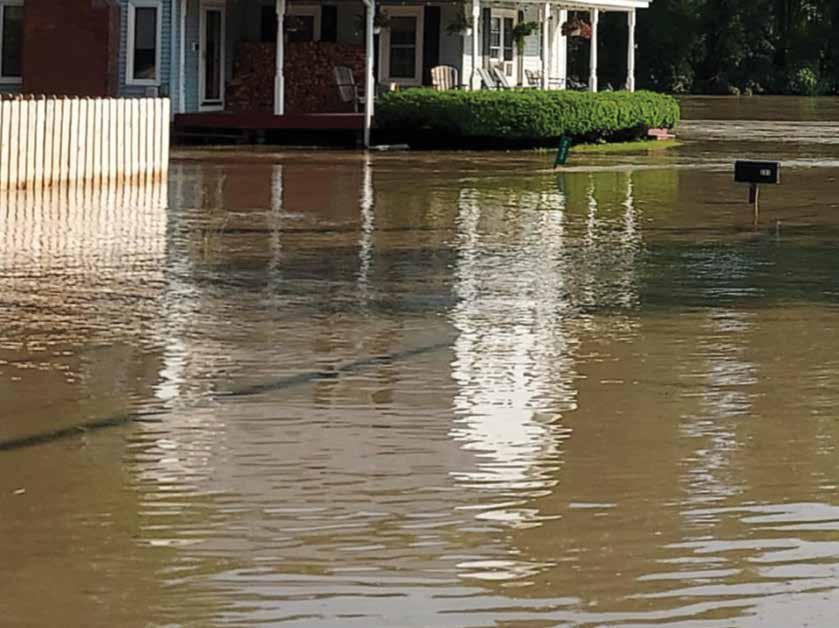
VT Flood Response & Recovery Fund
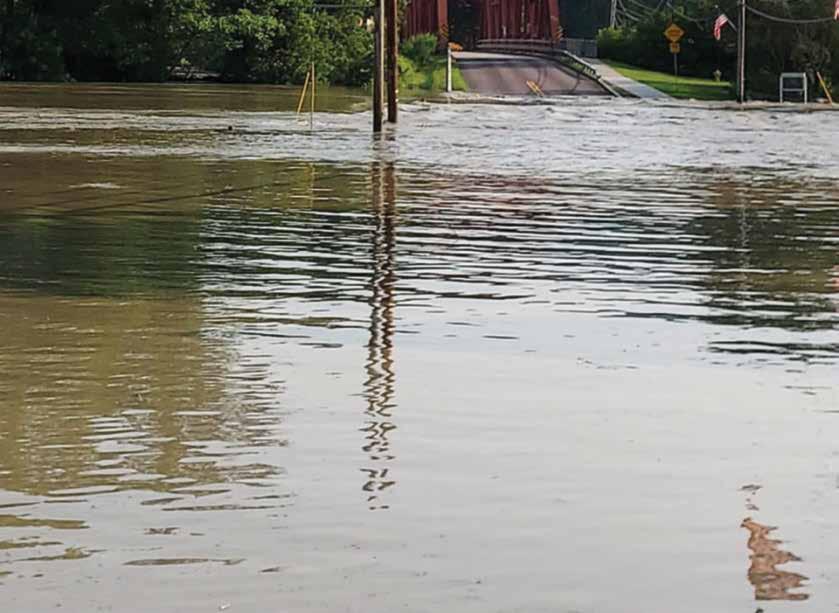
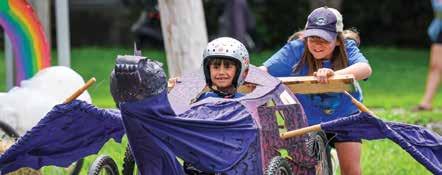
Because You Stepped Up
In the wake of two devastating years of flooding, your generosity made it possible for the Vermont Community Foundation to respond swiftly and stay engaged where it mattered most. Together, we reached more than 100 communities, met urgent needs, and helped build the capacity required for long-term recovery.
VCF’s ability to convene, listen, and act meant we could respond quickly and remain present for the long haul, helping local groups access resources, navigate systems, and plan for the future. This kind of catalytic role, rooted in relationships and informed by what’s happening on the ground, is what makes community foundations vital in times of crisis. Your giving supported not just relief but resilience, fueling local leadership, funding essential staff, and filling critical gaps where other systems fell short. We’re deeply grateful for your trust and partnership. Together, we’ve helped strengthen not just recovery today, but Vermont’s readiness for tomorrow.
Partners in Generosity
We’re deeply grateful to the corporate and philanthropic partners who trusted the Vermont Community Foundation as a hub for collective giving. National Life Group led the way with a recordsetting $1.5 million through its Do Good Fest. Others like TD Charitable Foundation, Lawson’s Finest Liquids, the WaterWheel Foundation, Vermont Mutual Insurance, Darn Tough, the Manton Foundation, Federal Home Loan Bank of Boston, and so many more stepped up early and generously. Support poured in from every direction and in every form, from benefit concerts and lemonade stands to the unforgettable Hope Box Derby and so many other heartfelt efforts. Donations came from individuals, families, and communities across Vermont and far beyond. The outpouring of kindness stretched across the country and from our neighbors in Canada, reminding us how deeply people care when their neighbors are in need.
115 GRANTS
• individual assistance
• human services
• nonprofits, libraries, small business recovery
• volunteer support
VCF Opens Farm Disaster Relief Grant Program
118 GRANTS
9/7
First Hug Your Farmer benefit concert held at the Flynn
9/19
Lawson’s Finest releases VT Strong Pale Ale to
76 GRANTS
• farms
climate resilience
• small business
• individual assistance
VCF partners with VT Agency of Agriculture on Farmer Grants
Hope Box Derby, photo credit: John Lazenby
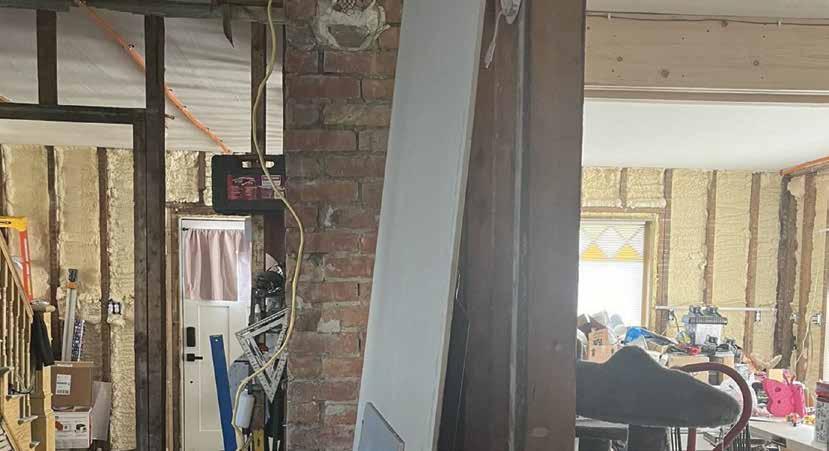
Accelerating Recovery Through Data and Connection
After the 2023 floods, the Vermont Community Foundation partnered with the Stormwise Foundation to launch VTRecovers, a centralized data system that helps Long-Term Recovery Groups (LTRGs) assess damage, track needs, and coordinate support. To accelerate progress on the ground, VCF funded case managers and construction leads to strengthen coordination and speed up repairs. The goal was clear: ensure Vermonters could connect quickly to help after a disaster.
When new flooding was forecast in July 2024, VCF worked with United Ways of Vermont to establish a data-sharing agreement—completed in just 24 hours—that allowed real-time damage reports from 211 calls to flow into VTRecovers. Thanks to the quick action and partnership of United Ways, LTRGs were able to follow up with impacted households within hours, not months.
That speed mattered for people like George*, an elderly Vermonter whose manufactured home was damaged when a nearby brook overflowed. Floodwaters ruined his insulation, washed out his driveway, and contaminated his well. George didn’t know he qualified for FEMA support until he
called 211 and was referred through VTRecovers to the kingdom united Resilience & Recovery effort (kuRRve), the LTRG serving the Northeast Kingdom.
The kuRRve team helped him file his FEMA application and secured funding to complete the repairs. “Having resources from the VCF allows us to walk with survivors on their flood recovery journey,” said Paige Hartsell, director of kuRRve. “That has meant the difference between someone staying housed while their home is repaired, instead of being displaced.”
"That has meant the difference between someone staying housed while their home is repaired, instead of being displaced."
Stormwise brought deep disaster recovery tech expertise. VCF helped connect state agencies, nonprofits, and recovery groups around a shared system. The result: a faster, more coordinated response—and more Vermonters getting the help they need to repair, rebuild, and recover.
*Name changed for privacy.
12/8

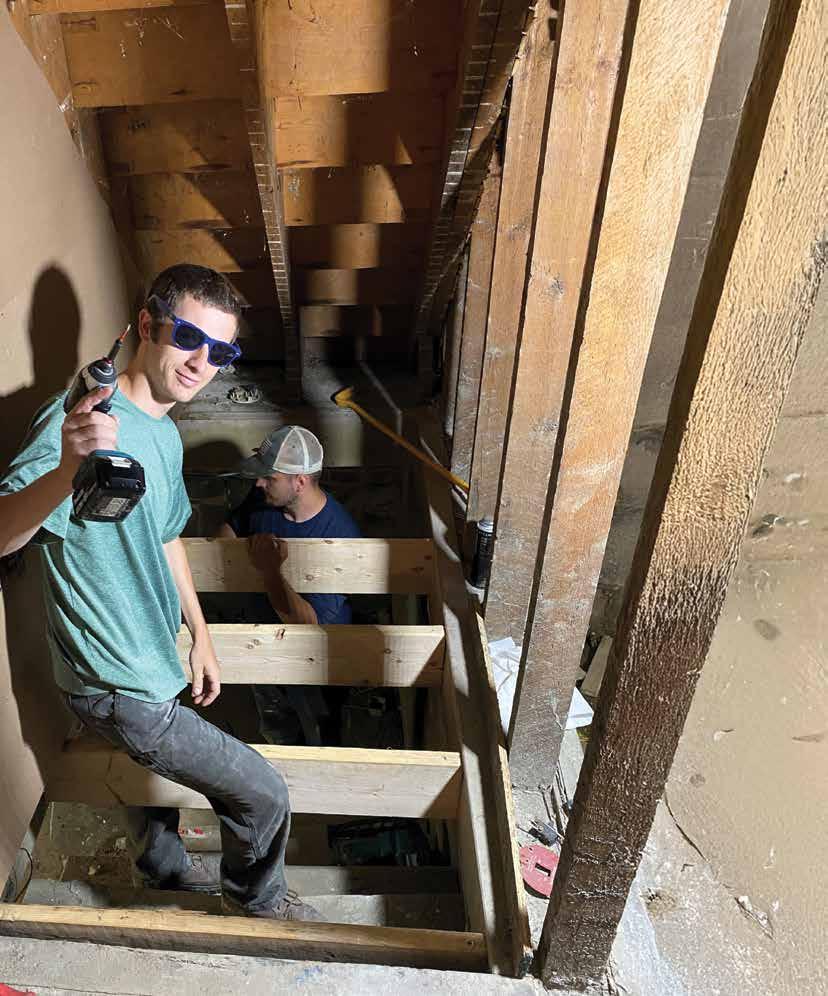
Photo credit: ReSOURCE
Building Back, Building Careers
In Barre, flood recovery is doubling as a career pathway for Marshall Hartman. His own home was damaged in the 2023 floods, so when he joined a team repairing homes in town, he brought firsthand empathy.
“Everything is more complicated than it seems,” he said. “You start with ripping out the drywall and insulation, but then there is so much more to do. It’s very stressful.”
Hartman enrolled in Serve Learn Earn, a 12-month program that combines job training with community service while helping participants earn a high school diploma. Working with ReSOURCE, his team has completed five homes in Barre—restoring them fully and making them more resilient to future flooding. He’s applied what he learned to his own home, too. “When I learned appliances could be put up on risers, I went home and put my own washer and dryer up, as well.”
Serve Learn Earn is a collaboration among ReSOURCE, Vermont Works for Women, Vermont Youth Conservation Corps, and Audubon Vermont. It is publicly funded through the Department of Forests, Parks & Recreation and supported by the Vermont Community Foundation through the McClure Foundation, Waterwheel Foundation Fund, VT Flood Response & Recovery Fund, and a discretionary grantmaking fund.
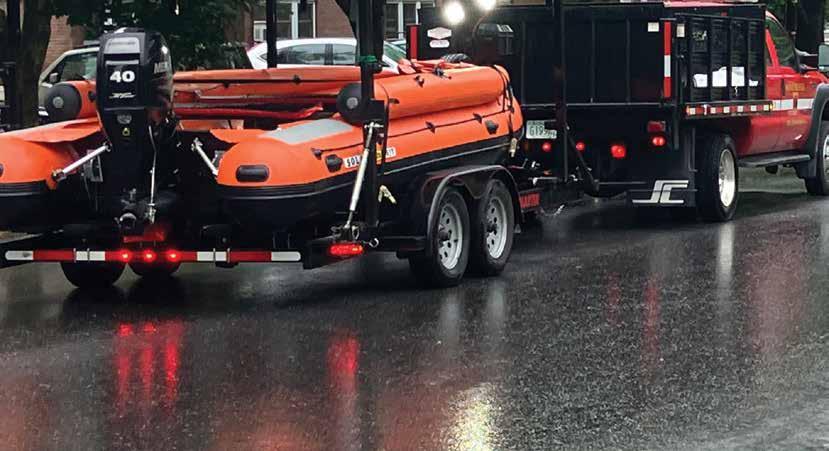
From Recovery to Resilience
The stories in this report offer a window into the recovery efforts in 2024–2025, but they represent only a portion of the Vermont Community Foundation’s work. Since launching the VT Flood Response & Recovery Fund in 2023, VCF has made hundreds of grants to meet urgent needs, strengthen communities, and build long-term resilience across the state. The examples below highlight just a few more of the ways we’ve supported Vermont’s recovery.
Immediate Assistance and Urgent Needs
When flooding struck again in 2024, VCF quickly mobilized resources through trusted partners— supporting emergency responders and agencies that sheltered, fed, and clothed Vermonters. Community grants helped create local supply hubs and equip volunteers for safe clean-up efforts.
Ensuring Recovery for All
Data shows that natural disasters have the greatest impact on those with the least resources. VCF reached out to partners in every flood-impacted town, urban and rural. Grants supported multilingual flood resources, legal aid for low-income Vermonters’ FEMA appeals, and research on the equity of VT’s flood response.
Strengthening Community Connections
Recovery also means restoring personal wellbeing and community cohesion. VCF supported 15 arts and public space projects to help towns heal together. Additional grants funded mental health care for flood survivors, local celebrations that foster connection, and the rebuilding of public parks and trails.
Supporting Small Businesses, Nonprofits, and Local Farms
VCF grants helped entrepreneurs—especially those historically excluded from aid—access technical help and financial resources to reopen. Libraries, nonprofits, healthcare providers, and social service agencies received help to stay operational. VCF’s Farm Disaster Relief Grant Program provided direct aid to farmers who lost equipment, crops, or property.
Watershed Resilience
Creating flood-resilient communities starts with healthy watersheds. VCF continues to partner with Watersheds United Vermont (WUV) to empower local groups to protect and restore waterways. VCF grants support efforts to improve water quality, reduce flood risk, and strengthen long-term community resilience across the state.
• immediate response
• food and shelter
• clean up • volunteer support
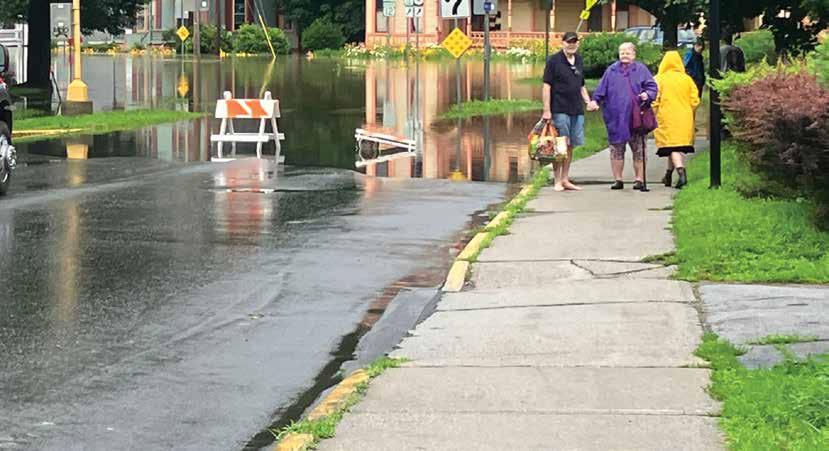
From Response to Readiness
The devastating floods of 2023 and 2024 will leave a lasting mark on Vermont. While the initial crisis response is behind us, we know the work is far from over. Many individuals, families, and communities are still navigating long and difficult roads to recovery and will be for years to come.
Throughout our response, we’ve learned a great deal. We saw the value of listening closely to local leaders and responding with flexibility. We recognized how critical it is to have strong systems in place before disaster strikes. And we witnessed firsthand how Vermonters look out for one another—neighbors helping neighbors in ways that continue to inspire our team every day.
We also know these floods will not be the last, as seen again in July 2025. As climate-related disasters grow more frequent and severe, we are committed to helping Vermont prepare. Our Community Impact team continues to support upstream efforts to strengthen watershed resiliency through the Daybreak Fund for Climate and Community, the Climate and the Environment Fund, and the Colby Hill Fund—with a focus on building long-term resilience at the community level.
This work has deepened our commitment to continuing both long-term recovery work and supporting long-term resilience, knowing that reducing vulnerabilities and supporting readiness will strengthen Vermont’s response when it’s needed again.
WHAT’S NEXT: The David R. Coates Fund for Vermont Disaster Relief
Recovery takes time. Preparedness takes foresight. We are committed to both.
In partnership with the leaders of the Vermont Disaster Recovery Fund (VDRF), the Community Foundation established this new permanent fund for response. It was seeded with remaining assets from VDRF, which was created in 2011 after Tropical Storm Irene and continued supporting flood recovery efforts through early 2025. The new Fund for Vermont Disaster Relief now stands ready to respond immediately when disaster strikes—ensuring fast, flexible, and equitable aid can reach Vermonters and communities in the earliest, most urgent moments of need and continue throughout the recovery process. Because no one’s ability to rebuild should depend on luck, timing, or zip code.
Visit vermontcf.org/vt-disaster-relief to learn more and find out how you can support Vermont in future disasters.
18 GRANTS
• direct assistance
• farm sector
• climate resilience
• temporary housing
VCF expands LTRG support to existing and newly formed groups in response to 2024 flooding
17 GRANTS
• direct assistance
• watersheds
• town emergency preparedness
GRANTS OCTOBER/NOVEMBER/
• long-term recovery groups
housing
flood mitigation • community resilience • mental health • farm sector
2/10
VCF announces a permanent fund for VT disaster relief
Mission Investing

“Making
-
Dan
Smith, President & CEO
Jon Ramsay shares Yellow Barn project updates with
staff
Since 2001, the Vermont Community Foundation has been a leader in committing a portion of managed funds to mission investing—using assets to create positive social and environmental impact. As one of the first community foundations in the nation to commit to this approach, we have consistently invested in projects that revitalize downtowns, create affordable housing, support local businesses, promote clean energy, sustain the working landscape, and create jobs across Vermont.
Mission investing is a powerful complement to grantmaking, aligning with our values and advancing our mission to close the opportunity gap. When you establish a fund with us, five percent of your assets are invested in the Vermont Investment Pool. This means your investment is building stronger, more equitable communities and creating a more vibrant, sustainable future for all Vermonters.
Mission investing at VCF delivers a return that is far more than just financial. At VCF, we are not only investing capital; we are creating lasting impact that will benefit generations to come.
Frequently Used Terms
Opportunity Gap: The divide that leaves too many Vermonters struggling to build bright futures no matter how hard they work
Mission Investments: Designed to generate both financial and social returns and made in alignment with the Foundation’s mission, values, and areas of focus
Place-Based Investments: Designed to generate both financial and social returns with a focus on a specific community
Venture Capital: Investments in early-stage companies, often in exchange for equity stakes in those companies
Equity Investments: Shares or partial ownership of a company expected to generate dividends as the company grows
Fixed Income: Investable funds loaned with a fixed rate of return
Mutual Funds: Money pooled from multiple investors and invested in securities such as stocks, bonds, and short-term debt
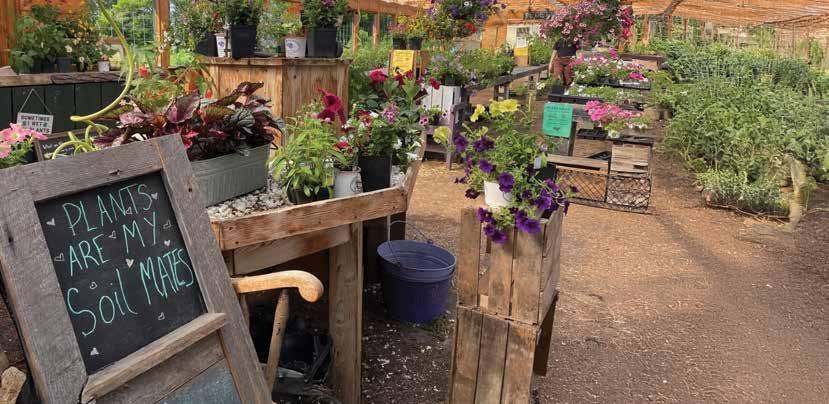
- Rose Paul, Plainfield Co-op President
“The people at the Vermont Community Foundation are community members, and they immediately understood our situation. They understood the social impact of investing in our co-op because they could see our value to the community.”
As a for-profit business, the Plainfield Co-op isn’t eligible for grants. However, a $75,000 bridge loan from the VCF mission investing program enabled the co-op to purchase the Plainfield Hardware building, moving the co-op out of the flood zone and into a location in the heart of the community with increased foot traffic. A follow-up $150,000 loan from VCF allowed the co-op to stock inventory for the new location, which includes a greenhouse offering vegetable starts, flowers, and gardening supplies, and continues to operate the hardware business.
Photo Credit: 7D Brand Studio
Philanthropy Meets Venture Capital
VCF at Hula is an innovative partnership with The Fund at Hula that allows donors to direct charitable dollars into an entrepreneurial eco-system that is driving job creation and innovation in Vermont.
Headquartered in Richmond, VT, Greensea IQ is pioneering the use of robot intelligence to clean ship hulls, reduce carbon emissions from ocean liners, and detect undetonated landmines in turbulent surf zones. Their mission—to drive technical advancement on and under the world’s oceans that is “more efficient, safer, and for the protection of earth and humankind”—is, in part, fueled by philanthropy.
Greensea IQ is one of the most recent investments made by the VCF at Hula Fund, a venture fund that channels charitable assets into startups that are building and scaling here in Vermont.
“Our focus is on backing innovative founders with diverse skill sets who are solving realworld problems and growing impactful businesses in Vermont and beyond.”
- Jesse Curran, The Fund at Hula Vice President

Launched in 2022, the VCF at Hula Fund invests in high-potential startups developing scalable solutions that create new jobs, economic opportunity, and positive community impact across Vermont. Through this collaboration, investment returns are channeled back into the charitable funds that participate, enhancing grantmaking capacity, and fueling philanthropic support of entrepreneurship and community development.
“Greensea was a strong fit given its dual impact on global connectivity and environmental sustainability,” said Jesse Curran, vice president at The Fund at Hula. “They deliver both economic and environmental returns—the kind of impact we aim to back.”
Representing a dynamic cross-section of Vermont’s innovation landscape, the VCF at Hula portfolio currently includes Greensea IQ, Biocogniv, Benchmark Space Systems, Upright Education, Syntensor, and Coremap.

increase in deliveries 2024-2025 800% projected increase in deliveries 2024-2026

Modular. Mobile. Life-Changing.
WheelPad is redefining accessible housing and helping keep families together.
In 2010, Julie Lineberger received the devastating news that her godson, Riley, had been in an accident that left him with tetraplegia, all four limbs and his core paralyzed. As his long recovery progressed, Julie watched him struggle to find accessible housing.
She and her husband, architect Joseph Cincotta, designed a renovation for a home Riley purchased. In the interim, however, Riley lived in a motel room— the only accessible option available. During that process, Joseph asked Riley, “What if there was an accessible bedroom and bathroom on wheels that could have been attached to your mom’s or brother’s house so you weren’t so isolated?” That question was the humble beginning of WheelPad.
Located in Wilmington, WheelPad’s mission is to keep families together. Their customers are veterans, people recovering from spinal cord injuries or severe illness, and elderly individuals who want to be near family. The fully accessible units attach to a home through an existing door or window and can be removed if no longer needed.
In 2024, WheelPad delivered six units. In 2025, they will double or triple that number—a trend RJ Adler,
director of growth, anticipates will continue. “The demand is there,” he said. “It’s having supply that’s the challenge. The hardest thing is getting a call from someone in a spinal recovery care center who is ready to go home and so excited to have found us, and we can’t get them a product for three months.”
Through an investment from the Vermont Community Foundation, WheelPad is stocking key components, including heat pumps, windows, and accessibility features that will shorten the manufacturing turnaround.
The Vermont Community Foundation provided WheelPad with a $600,000 loan as part of its mission investing portfolio.
“Shelter is one of the most basic human needs, especially for individuals who are dealing with a life-changing injury or illness. The faster we can get these units out the door, the better.”
- RJ Adler, WheelPad Director of Growth
Photo Credit: Erica Houskeeper
Vermont-Grown Innovation
The Yellow Barn Project is driving economic opportunity in Hardwick and showing what’s possible when communities invest in local food systems.
Last September, under bright blue skies, cheesemakers, farmers, entrepreneurs, and local officials gathered to celebrate the Yellow Barn Project—a collaborative, public-private, multi-year investment in the future of Hardwick, Vermont.
The project both celebrates and accelerates the Northeast Kingdom’s food and farming community, reaffirming Hardwick as one of the region’s most important food hubs. Situated at the entry to the village and along the Lamoille Valley Rail Trail, the Yellow Barn Project is home to the Center for an Agricultural Economy (CAE) Food Hub, Jasper Hill Creamery, and Cabot Cooperative Creamery’s new retail space.
While visitors shop for cheese, local honey, and farm fresh veggies, farmers are delivering crops to the adjacent 22,000 square-foot Food Hub to be stored and, eventually, distributed to institutions and grocery stores around the Northeast. Credited with creating or saving 150 farm jobs, the facilities are moving products from over 100 local farms to more
than 500 markets weekly, while the accelerator provides space for farm- and food-based businesses to grow, develop new products, and improve exports to external markets.
“The Community Foundation was a pivotal partner in bringing the seven-year Yellow Barn project over the finish line,” said Jon Ramsay, executive director of CAE. “We could not have completed the construction of the Food Hub without their financial support.”
“With the Food Hub operational, CAE is positioned to better support farms and the movement of local food across Vermont.”
- Jon Ramsay, CAE Executive Director
As part of the Community Foundation’s long-term strategy to promote community vitality, the Yellow Barn Project was supported by grants from both donor advised fundholders and discretionary funds, as well as over $1 million in mission investments in the form of loans over five years.
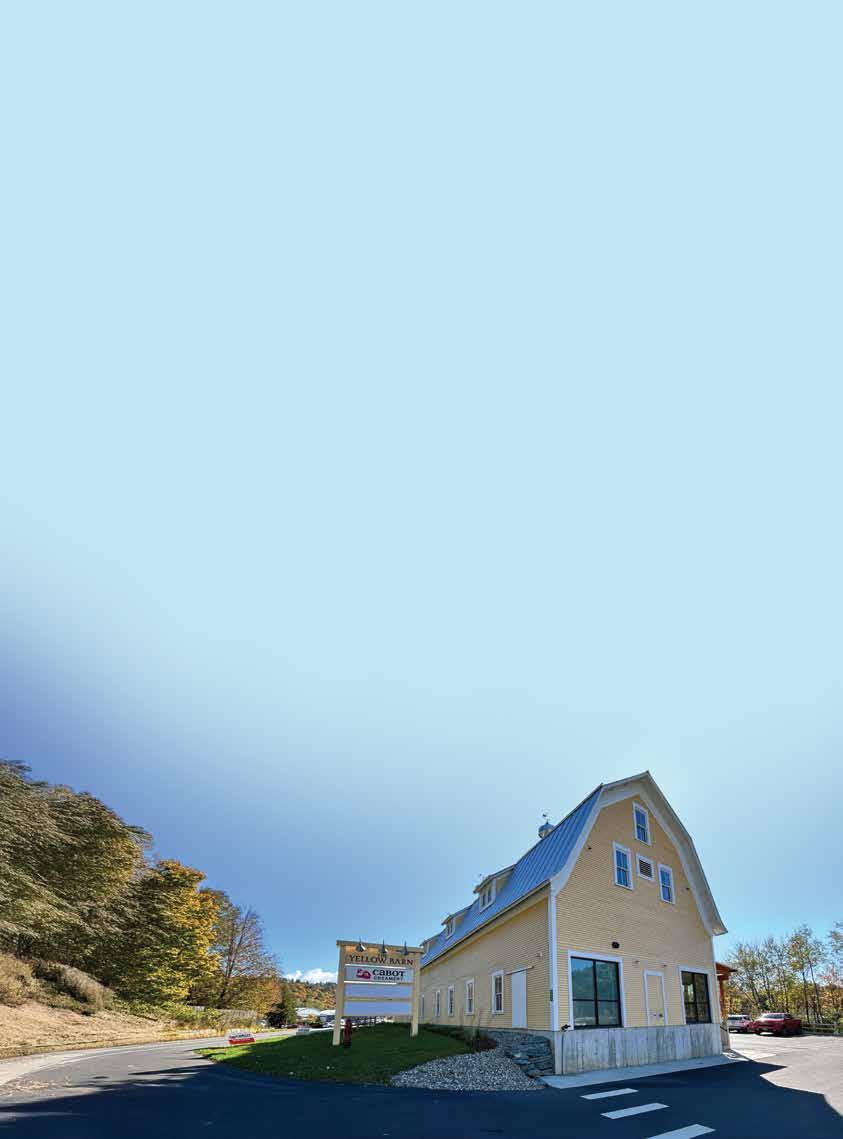
$12.5M in local products moved from farms to people
150
farm jobs saved or created (2020-2025)
Setting the Stage in Rutland
An expansion at the Paramount Theatre is demonstrating that the arts aren’t just good for the soul, they’re good for the economy.
“We see ourselves not only as an art center,” said Eric Mallette, executive director of the Paramount Theatre in Rutland, “but as the heartbeat of the economic barometer in town.”
That’s not just conjecture. A national study on the economic impact of nonprofit arts centers found that people who attend a cultural event in Vermont spend an average of $28 to $51 per person above and beyond the ticket price on food, childcare, parking, and hotels.
As the Paramount Theatre breaks ground on a longplanned expansion into the Richardson building next door, Eric points to how the project will impact downtown economically. “The expansion is projected to bring in an additional 20,000 patrons a year,” he said, “with around 40 percent coming from outside Rutland County.” The study, noted Eric, attributes the higher per person spend to non-local patrons.“Those dollars go right into the local economy supporting restaurants, hotels, shops, and retailers.”
The two-phase renovation will greatly improve the patron experience, says Eric. Phase one will add

60K visitors per year
$2.5M impact on local economy
concessions, restrooms, and more functional lobby space. Phase two will convert the upper floors into “unconventional” spaces that can be used for smaller theater productions, conferences, or meetings.
“We can color outside the lines and provide what the community needs,” explains Eric. “We can host 150 lawyers during the day and a slam poetry event that evening.”
Much of the funding for the project is coming from pledged donations arriving over time. “That’s challenging in the construction world where bills arrive every 30 days,” he adds. “The investment from the Community Foundation allows us to bridge those gaps and make more intelligent, cost-saving decisions.”
Of course, an art center is never solely about financial return. “We can all sit at home and watch Netflix,” said Eric, “but there’s something to be said for having an experience in a room with 850 other people.
“There’s a connective thread that weaves through every person, and it’s an appreciation for
the performance.”
- Eric Mallette, Paramount Theatre Executive Director
The Vermont Community Foundation provided the Paramount Theatre with a $600,000 loan as part of its mission investing strategy.
Our Trusted Partners in Advising
"Many VCF fundholders and donors find their way to us through the recommendation of their trusted professional advisor. These partnerships ensure our fundholders receive coordinated support, grounded in both financial planning and philanthropic strategy, so they can give with confidence, clarity, and impact. We’re especially grateful to Lisa and the many advisors who help make this possible.”
- Stacie Fagan, VCF Vice President for Philanthropy

“It’s really important for me that Vermonters protect their legacy. If you have a bank account, you have a legacy to protect.”
- Lisa Campion, Attorney and Owner, LMC
Law
“Safeguarding their resources and legacy is the most important reason my clients work with the Vermont Community Foundation. Charitable contributions are a valuable estate planning tool, but it’s important to be responsible with them. Many times, my client will have a specific nonprofit in mind, say the Humane Society, but in working with a philanthropic advisor, they’ll learn about other animal welfare organizations doing important work around the state. Or, if they have sizable assets, the VCF may recommend managing the fund to provide ongoing support to an organization over time. It’s all seamless—once the fund is set up, I incorporate it into their estate planning. The clients are always really pleased.”
Learn more about our partners and how we work together at vermontcf.org/professional-advisors.

Financial Report for 2024
Liabilities & Net Assets
3 Court Street
Middlebury, VT 05753
vermontcf.org

ON THE COVER
“Support from the Arts and Social Cohesion grant at VCF allowed us to think boldly when creating the original theater production, Change Your Life. Designed to welcome local audiences into a common cultural experience, and forged in the very place where they live, the show highlighted the reality of living in Hardwick.”
- Rose Friedman, Civic Standard Founder & Executive Director photo credit: Terry Allen
Writing: Emily Bradbury
Design: Amanda Coyle
cfstandards.org
Printing: R.C. Brayshaw & Company
© 2025
